Cities and towns in Western Pennsylvania use new tools, increased urgency in battle against blight
Lamp Theatre general manager John Cassandro calls the former restaurant and apartments at 207 Main St. one of his favorite buildings in Irwin, "at least architecturally."
"I sure would love to see someone take it over," he said of the rundown structure across Main from the theater that reopened in 2015. "I'd love to see another restaurant, or two more restaurants. With the theater now and the crowds we have on the weekends, we sure could use another place to eat."
Westmoreland County's land bank, working with Irwin officials, bought the three-story, brick building that used to house Major Tom's restaurant at a tax sale a few months ago. It is seeking offers.
"Really, we would like to have the property stay and be rehabilitated" rather than torn down, said Mary Benko, Irwin's borough manager. "We don't want another empty spot on Main Street."

John Cassandro, general manager of the Lamp Theatre. The first floor of the structure across the street from the theater was a restaurant, but it's been vacant for several years. Photo by Dan Speicher
Western Pennsylvania began to suffer massive population losses almost four decades ago as large industrial employers closed, and thousands of commercial buildings and homes deteriorated or were left vacant.
Local leaders, using new state tools such as land banks and their own initiatives, have stepped up efforts in recent years to prevent properties from becoming blighted, or fix up or tear down long decaying, tax-delinquent buildings that can threaten neighbors' safety and property values as well as a town's image.
"We've reached a tipping point in many of these communities, where economic decline, stagnant wages and people losing their jobs are hurting the ability of people to buy and fix up" older properties, Harrison Commissioner Charles Dizard said.
"Added to that, older people are dying or moving into assisted living and properties are not being sold to new, owner-occupant folks who have enough money to maintain them."
Harrison razed three dilapidated structures in 2016 and, with grants it secured, could tear down another five to six this year, Dizard said.
The township cuts grass and otherwise does basic cleanup on about 40 abandoned properties.
Hoping to ramp up rental unit inspections and better enforce property codes, Harrison officials also are considering adding two zoning and ordinance workers for a total of four in that department, Dizard said.
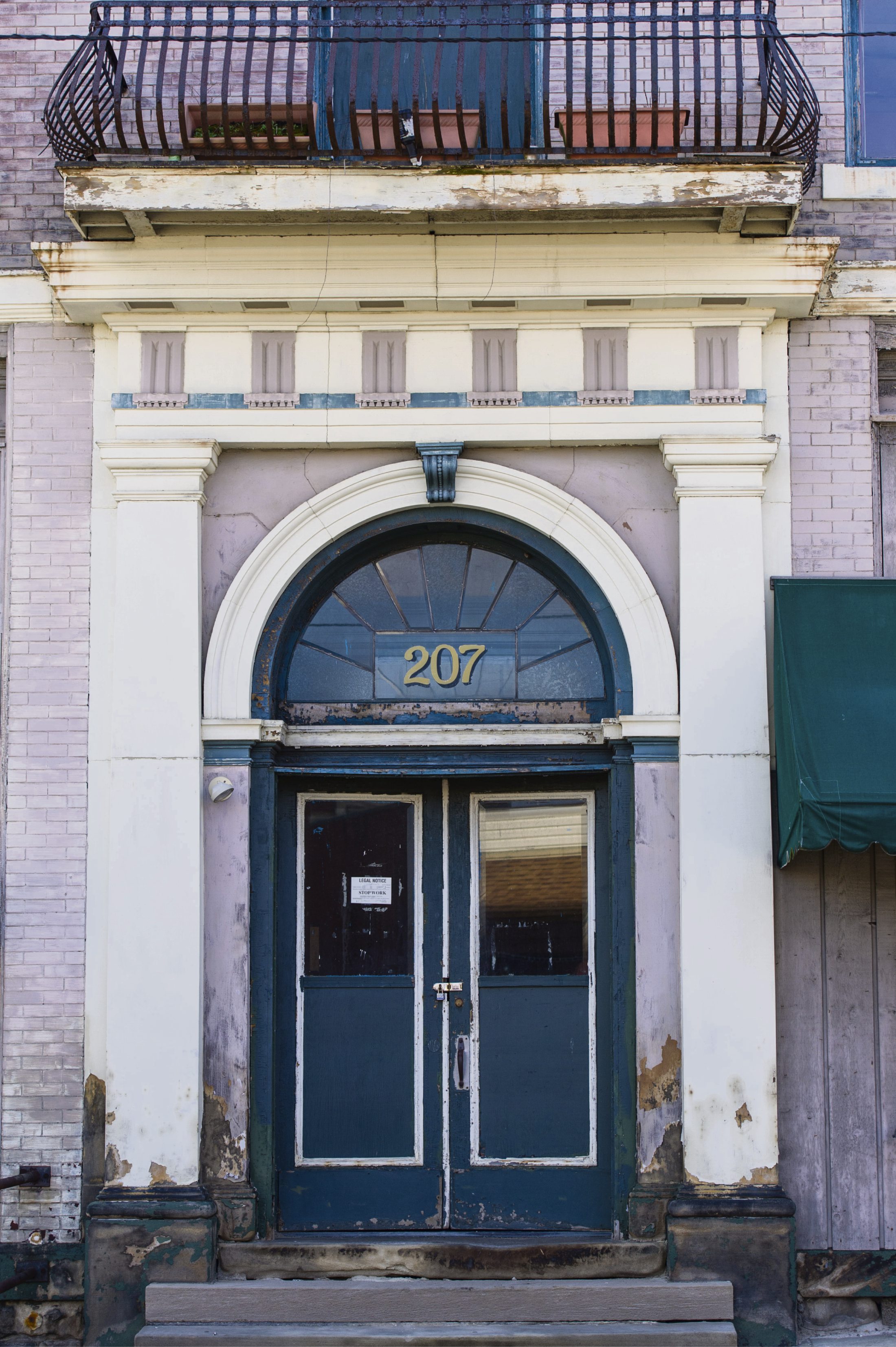
A former restaurant and apartment building at 207 Main St. in Irwin. Photo by Dan Speicher
Common problem, solution
Phyllis Chamberlain, executive director of the Housing Alliance of Pennsylvania, said northeastern Allegheny County communities, including Harrison and Tarentum, and those in Westmoreland County have become "pretty active" in trying to find answers.
"Blight is such a common problem. I've found that local elected officials generally make this one of their top priorities because they see how devastating it is on the community and the economy," said Chamberlain, whose Harrisburg-based lobbying organization focuses on issues such as blight, home ownership and housing policies.
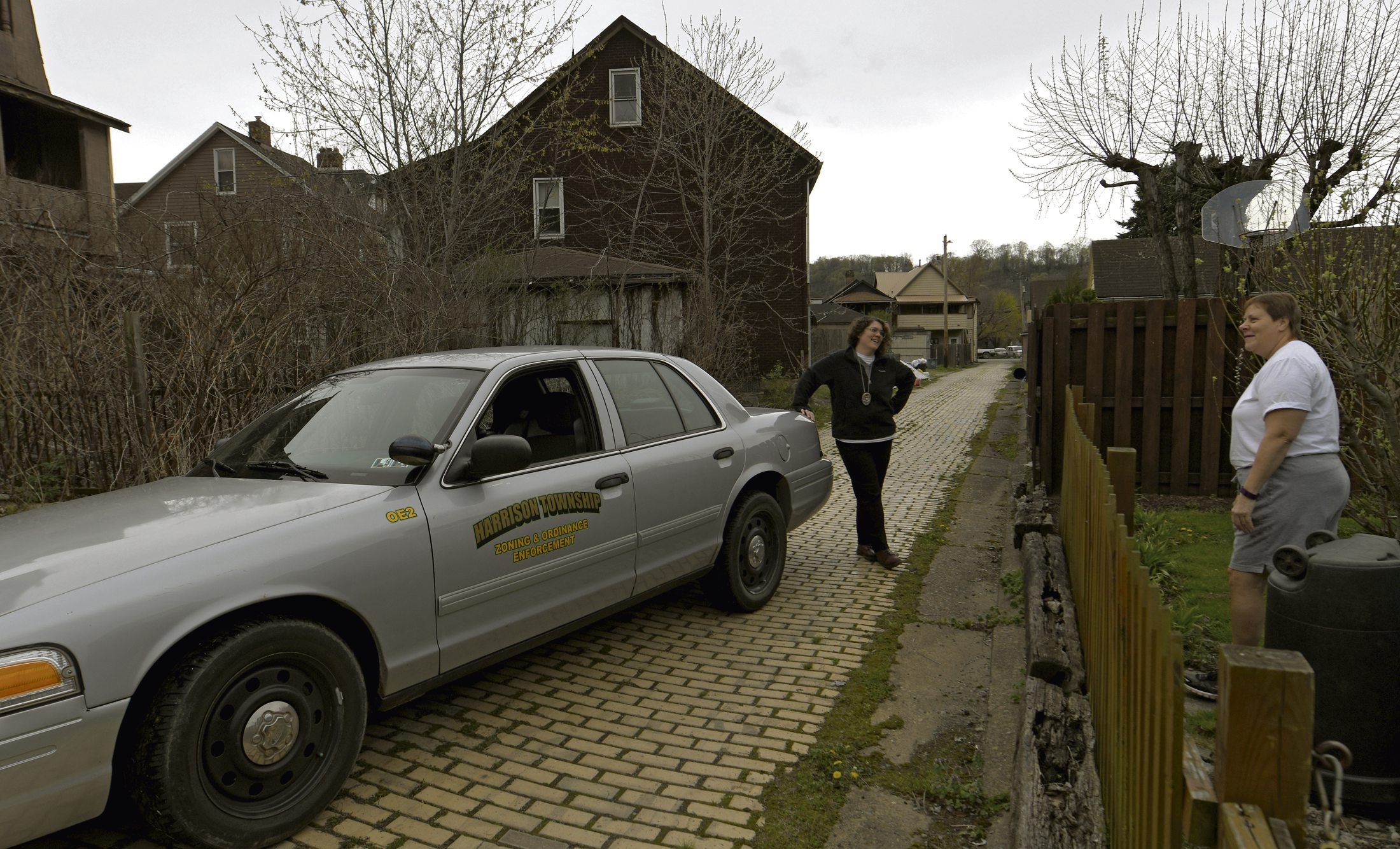
Lindsay Fraser of Harrison Township's zoning office talks with Natrona resident Cathy Zandarski while viewing a condemned structure on Pine Street. Photo by Louis B. Ruediger
Statewide, 15 land banks that allow local leaders to acquire blighted properties, improve and resell them, have been created since a state law authorizing them was passed in 2012.
Westmoreland County's land bank, created in October 2014, has acquired 67 parcels through tax sales or donations by individual owners or banks.
Of those, 28 are available, 37 were sold and two were leased for a community garden effort in Jeannette, said April Kopas, executive director of the land bank run through the county's redevelopment authority.
Westmoreland's initiative is one of the few land banks thus far that has bought and sold properties, according to Kopas.
Communities pay $5,000 to join, work with the county to identify properties for the land bank to acquire and keep the grass cut and otherwise handle basic maintenance.
Then, for five years after selling a property, the land bank will collect half the real estate taxes paid, she said.
Twenty of Westmoreland County's 65 municipalities are land bank members. Allegheny Township is the newest member, after joining early this year.
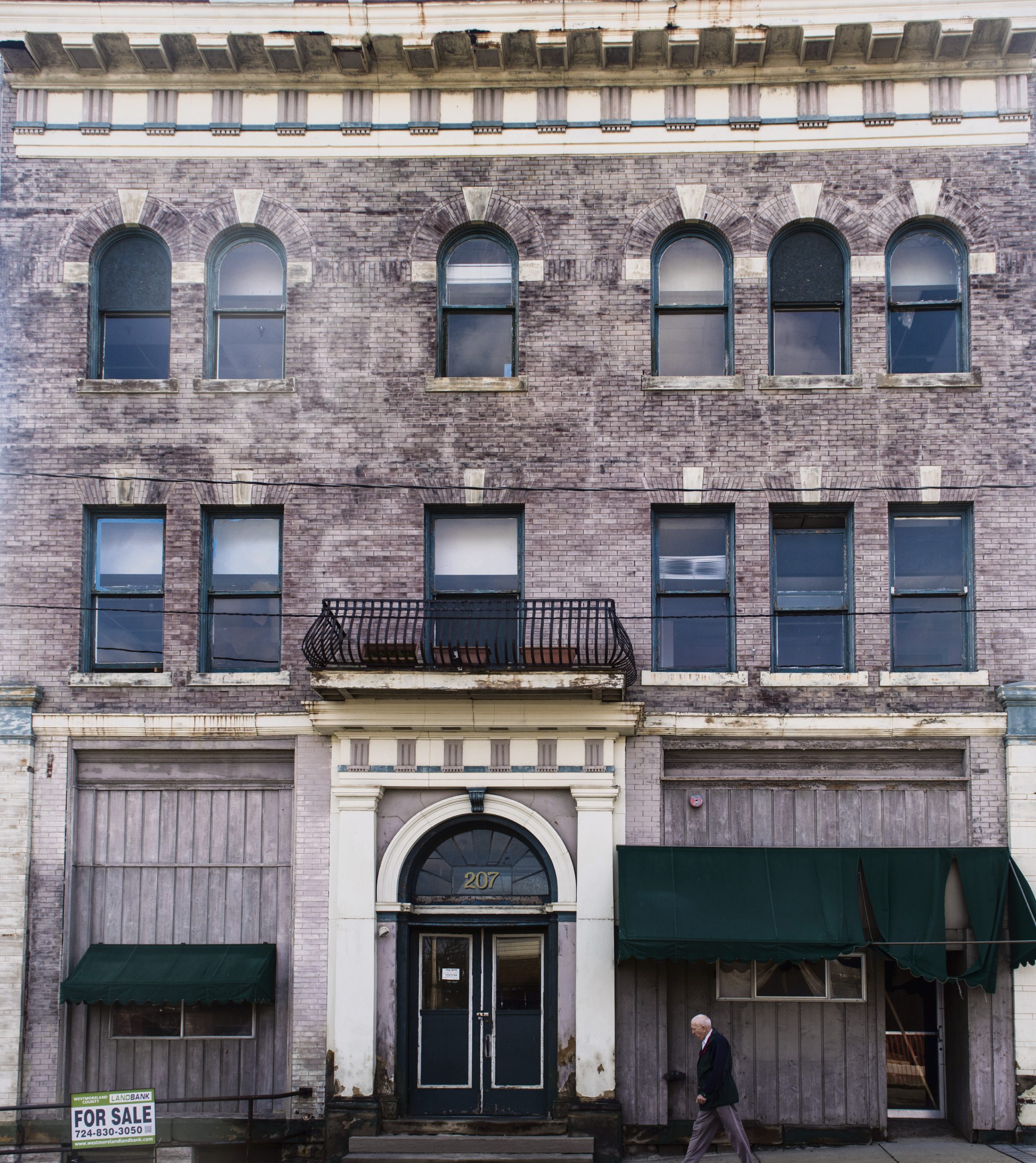
Westmoreland County's land bank owns the property at 207 Main St in Irwin. Photo by Dan Speicher
More urban=more blight
In Allegheny County, the Tri-COG Collaborative land bank could acquire its first 10 to 15 properties through tax sales or donations starting this summer, said An Lewis, executive director.
So far, 21 municipalities and six school districts belong. Most are in the Mon Valley and eastern suburbs, but Etna, Millvale and Sharpsburg in the Route 28 corridor also are members.
Allegheny County Council's decision last summer to join the effort is vital, Lewis said, because all three local taxing bodies' approval is needed to clear liens on properties offered for sale through the land bank.
A nine-member board of directors OK'd a $600,000 budget at its first meeting in March, she said, and member communities are being asked to suggest properties to target.
"Countywide, based on our work, almost 100,000 properties are affected by blight," Lewis said. "Some are abandoned, and some are occupied but in bad shape."
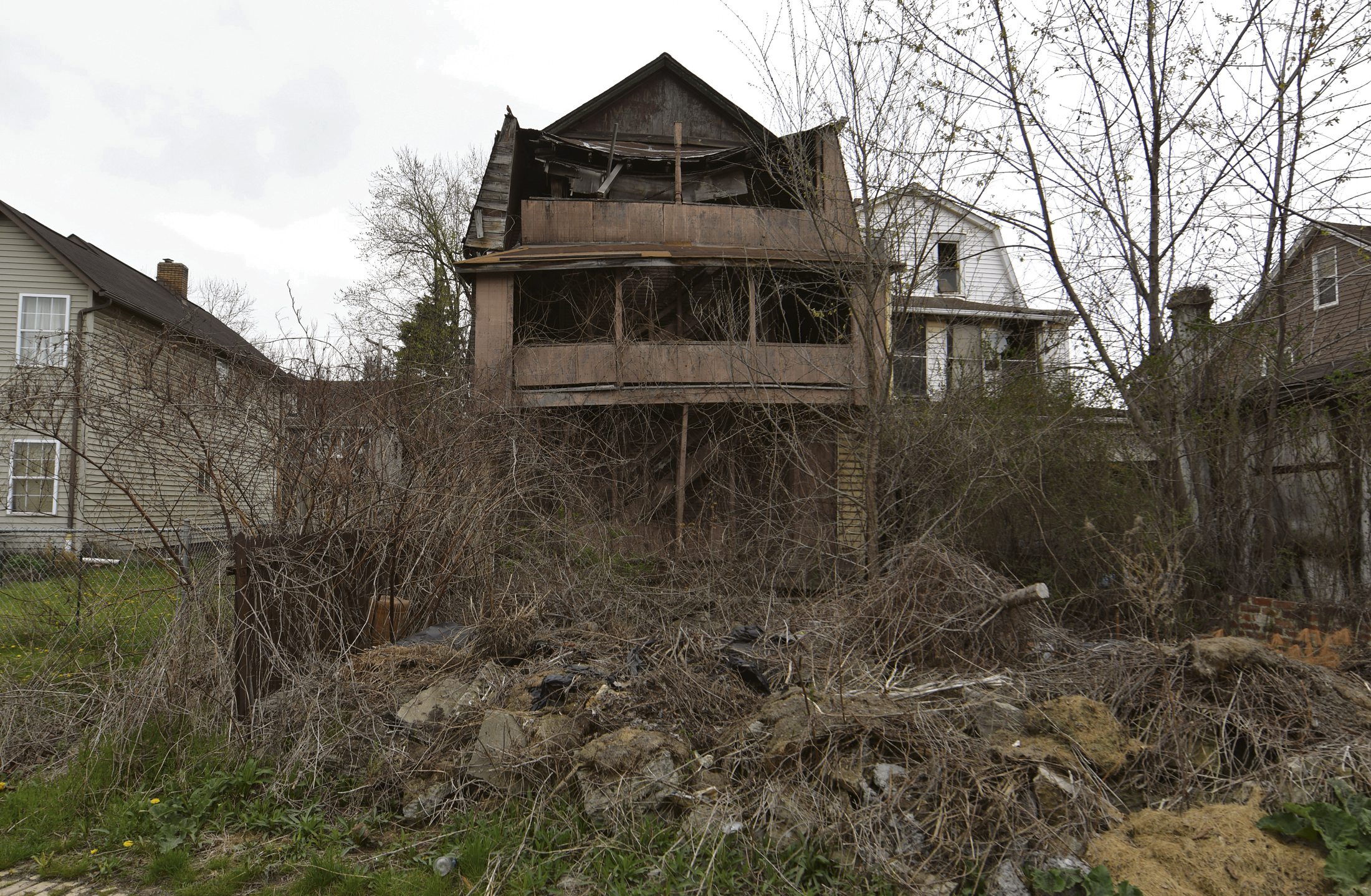
A condemned house along Pine Street in Harrison's Natrona neighborhood is scheduled for demolition this year. Photo by Louis B. Ruediger
Property inspections, policing, maintenance and razing the worst structures cost 41 municipalities in the Tri-COG area — the Steel Rivers, Turtle Creek Valley and Twin Rivers councils of government — a combined $10.7 million a year, a 2013 study on the cost of blight found.
The towns also lose out on $8.6 million annually in tax revenue.
"One of the things happening as of late is a recognition that blight is in a lot of places" and not just former industrial towns, Lewis said, adding the COGs have tackled the issue in earnest for five years.
"When there's a property that is not being taken care of on your street, it affects your home value even if your home is in terrific shape," she said.
More local powers
In addition to taking part in land banks, communities also now have expanded powers to lien property owners' assets and become conservators to improve blighted properties, through legislative changes in recent years.
And one new state law allows counties to collect fees of up to $15 when deeds and mortgages are recorded to build a fund for demolition of blighted properties.
Cambria, Lawrence, Cameron and Delaware counties have opted in so far, and Dauphin officials are considering it, said Tim Joyce, chief of staff for Sen. Jim Brewster, D-McKeesport, one of the sponsors.
Gina Cerilli, chairwoman of the Westmoreland County commissioners, said she's considered the fee and "would like to see the proceeds distributed through the office of the county commissioners directly."
Westmoreland County could collect around $385,000 a year with a $15 fee, for example, based on research by the office of state Sen. David Argall, R-Schuylkill and Berks counties, that uses 2014 data.
Through Allegheny County's Vacant Property Recovery Program, 54 properties in nine communities were sold to new owners between 2012 and 2016.
Most of the sites, less than an acre each, were to become new side yards for homes, information provided by the county said.
Potential buyers can file applications for sites that have been tax-delinquent for at least three years in 68 municipalities, including 14 Alle-Kiski Valley towns such as East Deer, Frazer, Harrison, Tarentum and West Deer. The county acquires, then resells them.
Doing it themselves
Communities also are becoming more aggressive.
Tarentum set aside $50,000 for demolitions this year, and is seeking grants to do more. The borough, with about 75 abandoned buildings, has a list of more than 20 structures to tear down in coming years.
"It's just asking for crime" to leave them standing, said council Vice President Erika Josefoski. "I don't want to give people anywhere to go and hide or get hurt."
The borough now mandates that landlords live within 40 miles of rental properties, or hire managers.
Tarentum also adopted a property maintenance ordinance in September that allows offenders to be fined $100 to $600, depending on the violation.
"If the grass isn't cut, we issue a ticket and, if it's corrected in a certain time" the fine is forgiven, Josefoski said. "We don't want to punish people. The goal is not to make money but to solve the issue."
Council also is considering joining the Tri-COG land bank.
Jeannette acquired 20 parcels from tax sales or donations, razed two structures on them and put 12 others on a demolition list. Most will be torn down this year, city Manager Michael Nestico said, adding the money will come from several sources.
Two "good, sound structures" could be sold to new owners, including a former Italian grocery, he added.
"Our blight stems greatly from the fact that we are a very old, developed city," Nestico said. "We have glass (industry) houses, factory houses, row houses that were situated for the factory and mill workers that used to be in Jeannette."
Those century-old, densely placed homes are less desirable than similar ones near Pittsburgh, he said, so many have become vacant and deteriorated. Jeannette also has a blight task force, with several city officials, that is studying sections of downtown, and is ramping up code enforcement, Nestico said.
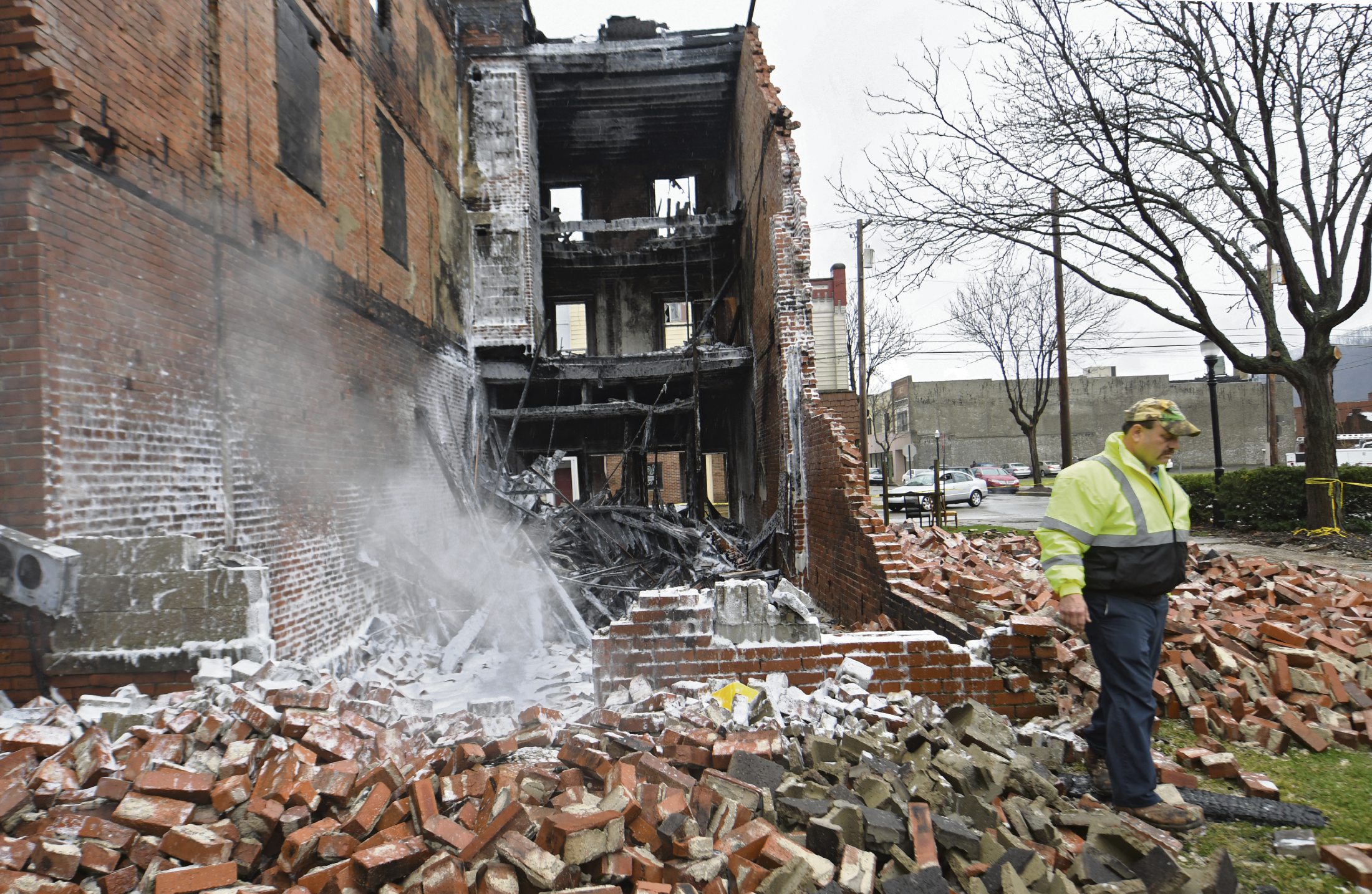
New Kensington assistant fire chief Ed Saliba Jr. evaluates the scene of a fire at 10th Street and Fourth Avenue in New Kensington on March 31. The abandoned building twice has been damaged in arson cases, a reason officials want to tear down such structures. Louis B. Ruediger
New Kensington officials are pushing for emergency approvals to tear down three adjoining buildings on 10th Street, including one damaged by arson in 2014 and again on March 30. The city hopes to have those structures, plus four others, demolished by summer, said Frank Tosto, executive director of the city's redevelopment authority.
Since 2007, New Kensington has razed 59 blighted structures, spending $595,000, Tosto said. Currently, $144,000 is earmarked for upcoming demolitions.
Arnold keeps up about 80 abandoned properties — most of which were foreclosed on or were signed over to the city, said Rick Rayburg, community development director.
"Most of what we're doing is just to keep them clean and cut the grass. We aren't doing maintenance," he said, adding that some properties are on a demolition list but the city has limited federal dollars to spend on demolitions.
"If you live in a city and an abandoned property is next to you, people try to get in them for various reasons and it's more receptive to criminal activity," he said.
Arnold tears down seven to 10 blighted buildings in a typical year, but this year is working to acquire and raze the old Hitching Post tavern, with upstairs residential units, and an adjacent building on Fifth Avenue.
"It's in bad shape," Rayburg said of the Hitching Post, which closed about a decade ago. The roof has partially collapsed into the second floor, he said.
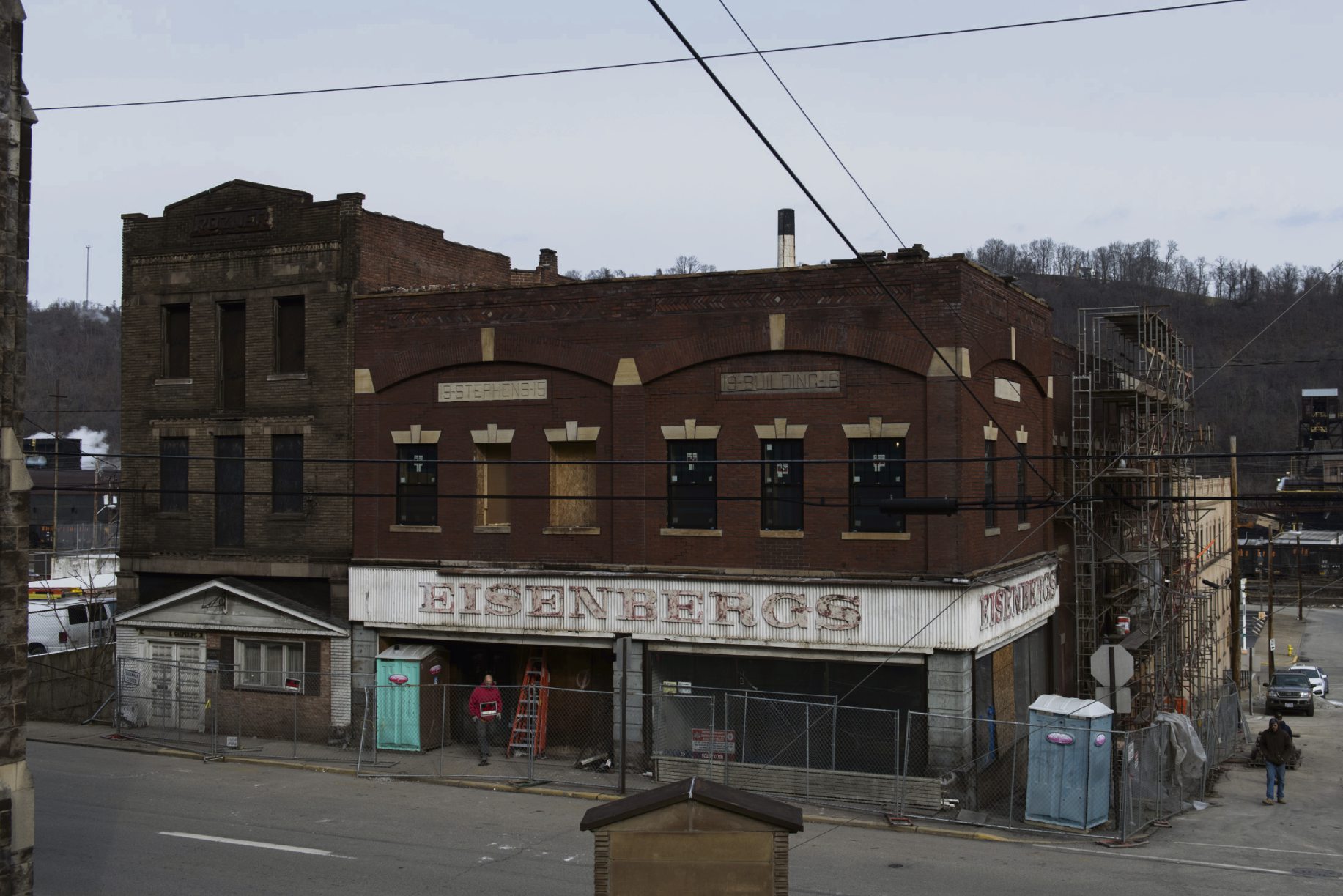
The former Eisenberg's department store in Monessen is being converted to a 13-unit apartment building by the Mon Valley Initiative. Photo by Dan Speicher
Monessen moving forward
In Monessen, Eisenberg's department store once was a hub for shoppers. But, in the 20 years after it closed in 1997, the red brick building on Schoonmaker Avenue suffered extensive water damage from a deteriorating roof.
The Homestead-based Mon Valley Initiative took the store, built in 1915-16, as a donation and is spending $2.3 million to divide it into 13 apartments on four levels. They should be completed by the end of May, said Patrick Shattuck, real estate director.
There's a "robust waiting list" of potential tenants, Shattuck said, and rents will range from $405 to $620 based on the unit size and tenant income restriction.
Pastor Sandy Fitzgibbons and members of the United Methodist Church of Monessen, across the street, hope the new Eisenberg Apartments will be a step forward.
"It's been sitting empty for so many years and in that part of town, there's been nothing there," Fitzgibbons said of the building, adding she avoids holding nighttime programs for the mostly older church members.
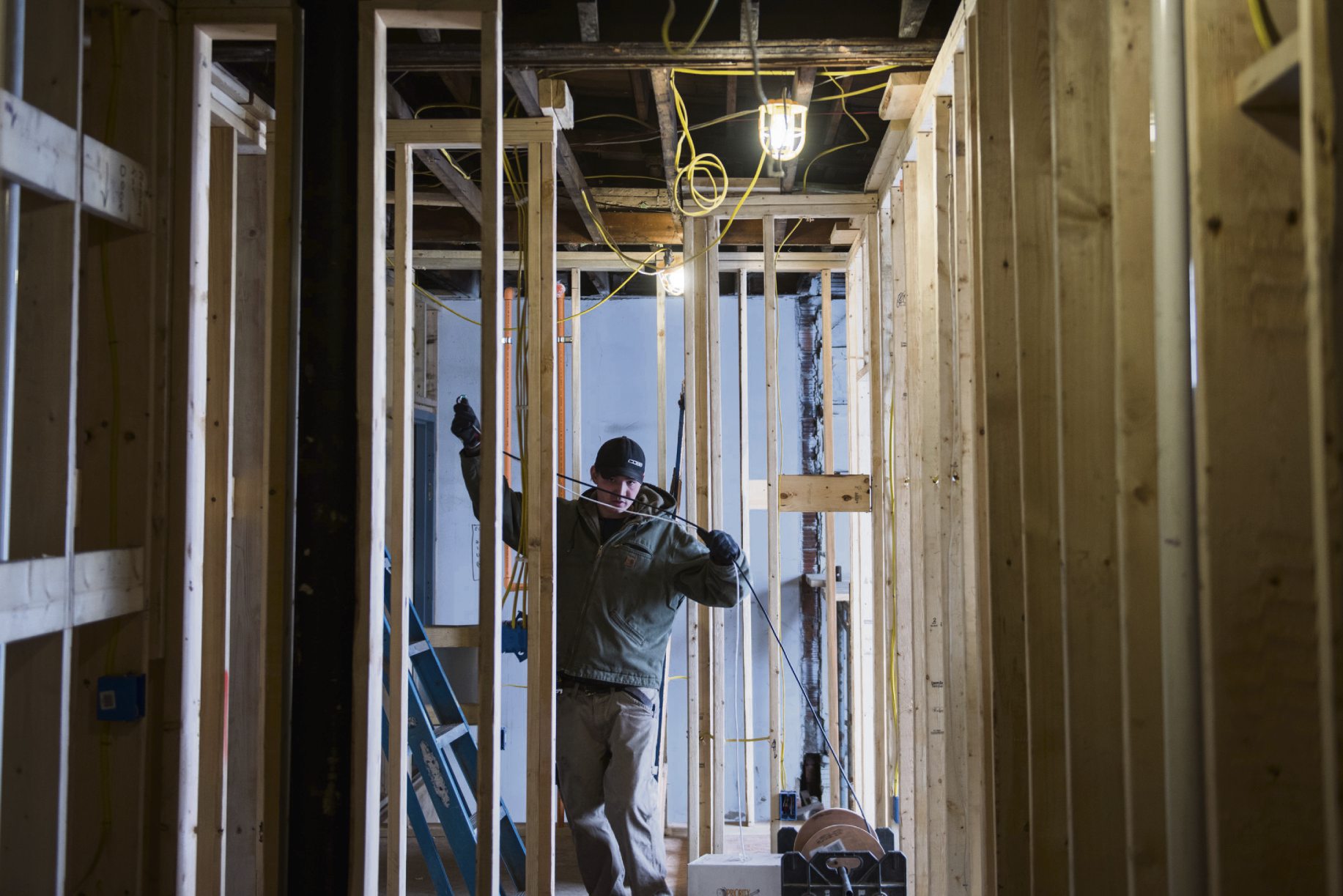
Dillon Jolly, 21, of Scenery Hill works on wiring the old Eisenberg's. Photo by Dan Speicher
Mayor Lou Mavrakis estimates blight mars as many as 400 homes and 35 downtown buildings in the city, where home buyers struggling to pay debts often just leave.
"I've gone into homes in Monessen where food is still on the table," Mavrakis said.
Tax-delinquent houses draw no interest at foreclosure sales because of liens that must be paid, he said, and after a decade or so the city often ends up with the property.
"What are we supposed to do with it, without any money?" said Mavrakis, who criticizes federal officials for providing only about $75,000 a year in grants for demolitions.
Monessen, about $13.5 million in debt, has torn down about 20 buildings since 2014, he said.
The Mon Valley Initiative, in addition to the Eisenberg's project, renovated two homes in Monessen recently and has helped income-eligible buyers in that city and elsewhere with a program that offers $10,000 in down-payment and closing cost assistance, Shattuck said.
Kim Leonard is a Tribune-Review staff writer. Reach her at 724-226-4674, kleonard@tribweb.com or @KimLeonardTrib.
